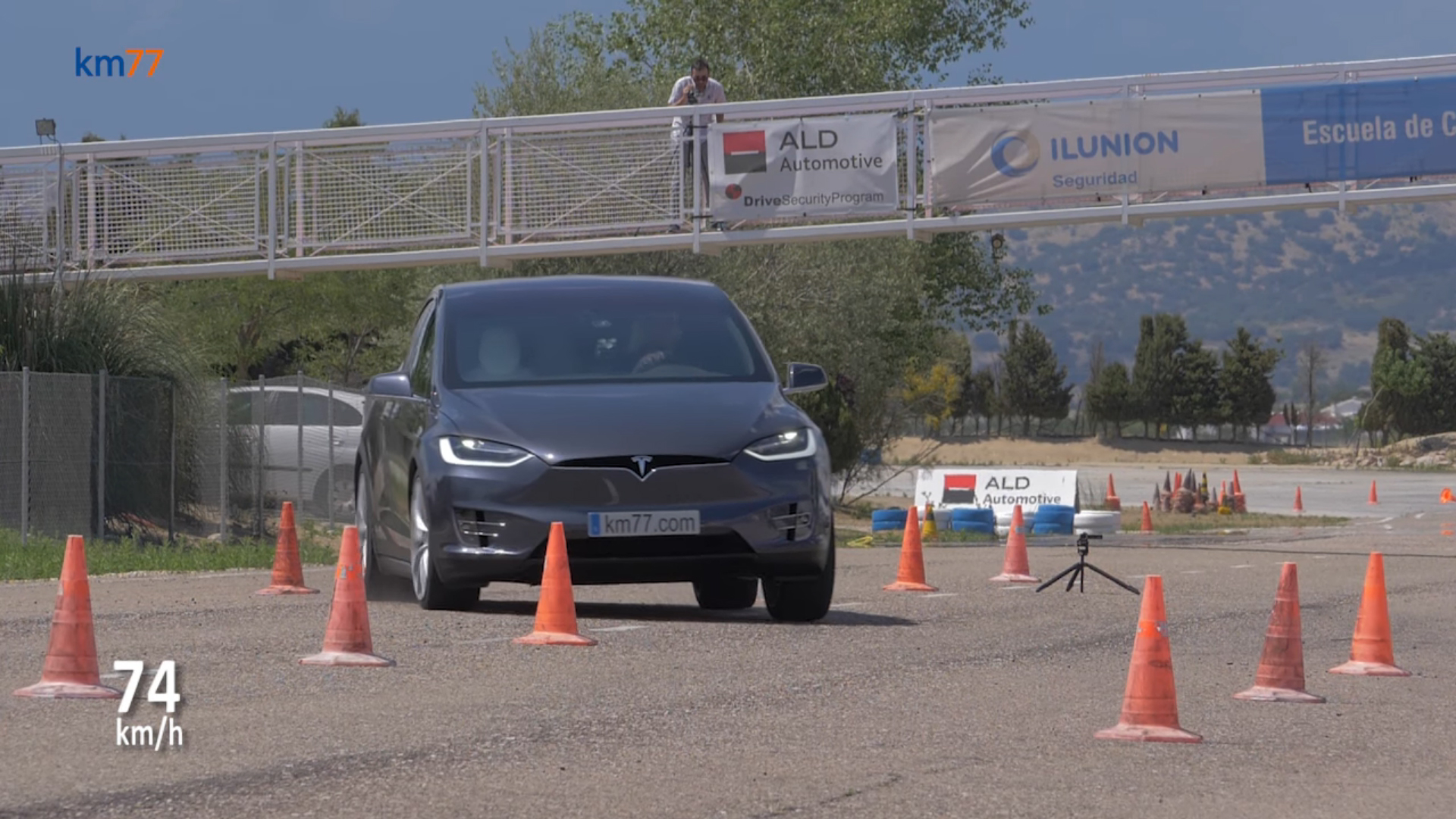

In Sweden, one of the basic tests a vehicle is put through for safety is the “undanmanöverprov“, or the “evasive maneuver test“. Affectionately called the “moose test“, this exam measures how well a vehicle performs when needing to swerve out of the way when a moose jumps out of the woods and onto the road. We’ve heard that the Model X is a safe car from those involved in accidents, but how does it fare against avoiding a potential collision?
Should something run out in front of your vehicle, whether that be a moose, deer, or child running after their ball; you better be paying attention to the road. Generally this will produce one of two reactions in most people:
- Slam on their brakes
- Swerve to avoid while maintaining current speed
The moose test assumes the latter will be the desired response and charts vehicle responsiveness, balance, and overall controllability throughout the process.
About two weeks ago I was traveling to Washington D.C. from Pennsylvania, something I have done quite often in the past for work. At around 65 mph in my wife’s Toyota Venza, I was behind a large tractor trailer that happened to hit a deer and send it somersaulting into my lane. When I made the evasive maneuver to avoid hitting the flying carcass, it was very similar to the actions taken in the video below, which can be explained through a simple chart of how cones are placed:

Thanks to the large battery back at the bottom of the Model X, the car is planted very well, unlike most SUVs. This changes the center of gravity to be closer to the road, lessening the amount of chassis roll the vehicle will experience while taking a corner. Effectively, this makes the Model X a significantly less roll-over risk than, say, my wife’s Toyota Venza which slide its rear-end out in the above mentioned story. The Model X plowed through the cones at around 70 km/h (43 mph) with ease. This is around 5 km/h (3 mph) better than most SUVs in its class, which might not seem like a large number, but is still significant enough to top the charts in safety results for this test.

Even though the Model X performed well in the avoidance test, there may be a circumstance where the driver isn’t able to avoid the gigantic beast that is a moose. I’m not sure that its gigantic windshield would fair well against an actual moose crash test like the Volvo below:

Overall, this further enforces the astounding ratings that the Tesla received from the NHTSA recently. It is a wonderfully engineered and safe-to-drive SUV which, should an accident ever occur, give peace of mind to the person behind the wheel.